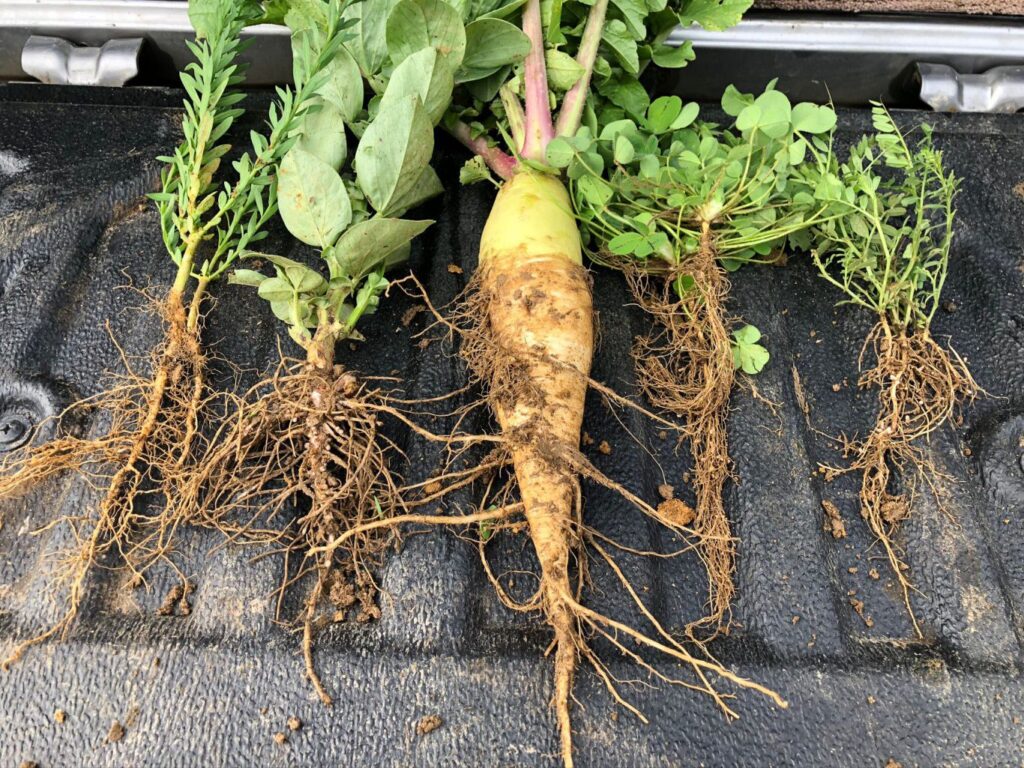4 MAINTAIN LIVING ROOTS
THE CORE PRINCIPLES OF REGENERATIVE AGRICULTURE
Soil health is one of the main focuses that Regenerative Agriculture principles aim to enhance. Why soil health? Regenerative approaches create diverse microbiological communities within the soil, which are supported by the ideal subterranean environment the farming system provides. These soil microbes in turn, are able to improve the overall soil function, deliver essential nutrients to plants and potentially improve the nutritional value of the produce. The following identifies the underlying principles of a Regenerative Agriculture system.

MAINTAIN LIVING ROOTS
Achieving any resource goal is only possible through feeding soil microbes through carbon-rich root exudates. Ensuring living roots are growing within the soil for as long as possible maximises the availability of these exudates for microbes. Feeding the creatures within the base of the soil food web is vital for enhancing the soil function. Of course, during an arable system there are certain times of the year of which this is unachievable. Cover crops are a significant tool in maximising the time living roots are in the growing in the soil. They are able to provide a range of benefits, including;
- Reduced soil erosion
- Soil structural benefits
- Soil fertility building
- Nutrient capturing, fixing and recycling
- Pest and weed management
- Local water quality improvements
